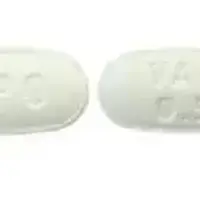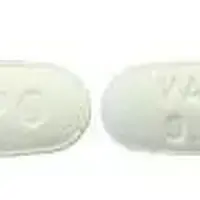Generic name: chantix
Availability: Prescription only
Pregnancy & Lactation: Risk data available
Brand names: Tyrvaya, Chantix, Varenicline, Varenicline tartrate (eent) (monograph)
What is Varenicline (systemic) (monograph)?
Introduction
Nicotinic acetylcholine receptor partial agonist.
Uses for Varenicline (Systemic)
Smoking Cessation
Adjunct in the cessation of cigarette smoking.
USPHS guideline for the treatment of tobacco use and dependence recommends varenicline as one of several first-line drugs that may reliably increase long-term smoking abstinence rates. For additional information, consult the most current USPHS Clinical Practice Guideline available at [Web]
In clinical studies, varenicline therapy increased continuous abstinence rates compared with placebo or active comparator (e.g., bupropion). Also reduced urge to smoke.
In studies in patients with stable, documented cardiovascular disease and patients with mild to moderate COPD, efficacy of varenicline was comparable to that in the general smoking population without these conditions.
Also evaluated in patients with stable major depressive disorder in a postmarketing study; benefits also observed in this population without evidence of increased neuropsychiatric effects. (See Neuropsychiatric Symptoms and Suicidality under Cautions.)
Efficacy and safety of varenicline given in conjunction with other smoking cessation therapies (e.g., bupropion, nicotine replacement therapy) not established.
Related/similar drugs
bupropion, cyclosporine ophthalmic, varenicline, Restasis, Chantix, nicotine, XiidraVarenicline (Systemic) Dosage and Administration
Administration
Oral Administration
Administer tablets orally after eating, with a full glass of water.
Dosage
Available as varenicline tartrate; dosage expressed in terms of varenicline.
Adults
Smoking Cessation
Oral
0.5 mg once daily on days 1–3, followed by 0.5 mg twice daily on days 4–7, and then 1 mg twice daily from day 8 through the end of 12 weeks of treatment. Initiate 1 week before the target smoking cessation date. Alternatively, patients may begin treatment with varenicline and then quit smoking between days 8 and 35 of treatment.
Titrate dosage during the initial week of treatment to reduce the incidence of drug-related nausea. Dosage may be reduced temporarily or permanently in patients who experience intolerable adverse effects.
In patients who have successfully stopped smoking by the end of 12 weeks of initial treatment, consider an additional 12 weeks of therapy to increase the likelihood of long-term abstinence.
Encourage patients who are motivated, but unable to quit smoking during 12 weeks of initial treatment (for reasons other than intolerability due to adverse events) or those who have relapsed after varenicline therapy to make another attempt to quit smoking once factors responsible for such failure have been identified and addressed.
Gradual Quit Approach
OralIn patients who are unwilling or unable to abruptly quit smoking, consider a gradual approach to smoking cessation.
Initiate varenicline while reducing number of cigarettes smoked by 50% within the first 4 weeks; reduce by an additional 50% in the next 4 weeks, and then continue to reduce until complete abstinence is achieved by 12 weeks. Continue varenicline for an additional 12 weeks for a total duration of therapy of 24 weeks.
Encourage patients to attempt to quit sooner if they feel ready.
Prescribing Limits
Adults
Oral
1 mg twice daily.
Special Populations
Hepatic Impairment
Dosage adjustment not necessary.
Renal Impairment
Mild to moderate renal impairment: No dosage adjustment needed.
Severe renal impairment (Clcr <30 mL/minute): Initially administer 0.5 mg once daily; titrate dosage as needed to a maximum of 0.5 mg twice daily.
Patients with end-stage renal disease undergoing hemodialysis: Maximum of 0.5 mg once daily.
Geriatric Patients
Dosage adjustment not needed; select dosage carefully and monitor renal function. (See Geriatric Use under Cautions.)
Warnings
Contraindications
-
Known history of serious hypersensitivity reactions or skin reactions to varenicline.
Warnings/Precautions
Neuropsychiatric Symptoms and Suicidality
Serious neuropsychiatric events, including changes in mood (e.g., depression, mania), psychosis, hallucinations, paranoia, delusions, homicidal ideation, hostility, agitation, aggression, anxiety, panic, and suicidality (e.g., suicidal ideation, attempted and completed suicides), reported during postmarketing experience with varenicline and bupropion (another smoking cessation drug); has occurred in patients with or without psychiatric history.
Additional analyses and studies, including a large randomized controlled study in more than 8000 patients, indicate that risk is lower than previously thought and comparable to nicotine replacement therapy or placebo. However, there is evidence indicating that patients with a preexisting psychiatric illness (e.g., depression, anxiety disorder, schizophrenia) may be more likely to experience such events.
Although risk remains, particularly in individuals with current or past psychiatric illnesses, patients generally do not experience serious consequences (e.g., hospitalization); therefore, benefits of smoking cessation (e.g., reduced risk of developing pulmonary disease, cardiovascular disease, and cancer) continue to outweigh risks of these cessation drugs.
Monitor patients for neuropsychiatric symptoms or for worsening of preexisting psychiatric conditions. Discontinue varenicline in patients who develop agitation, hostility, depressed mood, or changes in behavior or thinking that are not typical for the patient or who develop suicidal ideation or suicidal behavior. Discontinue therapy, reduce dosage, or continue treatment under close monitoring based on severity of symptoms and patient response to smoking cessation therapy.
Provide ongoing patient monitoring and supportive care until symptoms resolve.
Some neuropsychiatric effects, including unusual and sometimes aggressive behavior directed toward oneself or others, may be worsened by concomitant use of alcohol. (See Specific Drugs under Interactions.)
Seizures
Seizures reported, in most cases occurring within first month of therapy. Observed in both patients with and without a seizure history.
Weigh risks versus benefits in patients with a history of seizures or other factors that can lower seizure threshold. Discontinue the drug immediately if a seizure occurs during therapy. (See Advice to Patients.)
Concomitant Use of Alcohol
Decreased tolerance to alcohol reported during postmarketing experience, sometimes accompanied by unusual, aggressive behavior. (See Specific Drugs under Interactions.) In some cases, aggressive behavior resulted in harm to a person or property. Patients often had no memory or impaired memory of the events.
Patients should reduce their consumption of alcohol until the effects of varenicline on alcohol tolerance are known. (See Advice to Patients.)
Accidental Injury
Traffic accidents, near-miss incidents in traffic, or other accidental injuries reported. In some cases, somnolence, dizziness, loss of consciousness or difficulty concentrating was reported. (See Advice to Patients.)
Cardiovascular Effects
In patients with stable cardiovascular disease who had received varenicline, certain cardiovascular events (i.e., angina pectoris, nonfatal MI, nonfatal stroke, need for coronary revascularization, hospitalization for angina pectoris, TIA, new diagnosis of peripheral vascular disease, hospital admission for a peripheral vascular disease procedure) reported. A meta-analysis revealed that major adverse cardiac events (cardiovascular death, nonfatal MI, nonfatal stroke) occurred more frequently during treatment and the 30 days after treatment in patients receiving varenicline when compared with patients receiving placebo, while overall and cardiovascular mortality was lower with varenicline. Results were not statistically significant but were consistent; power was limited due to low event rates.
Not studied in patients with unstable cardiovascular disease or in patients having experienced a cardiovascular event during the 2 months prior to screening.
Weigh risks against benefits of varenicline use in smokers with cardiovascular disease. Smoking is an independent and major risk factor for cardiovascular disease, and cessation is of particular importance in this patient population.
Advise patients to notify a healthcare provider if experiencing new or worsening symptoms of cardiovascular disease.
Somnambulism
Somnambulism, sometimes resulting in harm to self, others, or property, reported. (See Advice to Patients.)
Sensitivity Reactions
Hypersensitivity reactions, including angioedema, reported. Manifestations included swelling of the face, mouth (tongue, lips, and gums), extremities, and neck (pharynx and larynx). Life-threatening angioedema requiring emergent medical attention because of respiratory compromise infrequently reported.
Discontinue varenicline immediately if such symptoms occur. (See Advice to Patients.)
Dermatologic Effects
Serious dermatologic reactions, including Stevens-Johnson syndrome and erythema multiforme, reported; potentially life-threatening. Instruct patients to discontinue varenicline and immediately contact healthcare provider at first appearance of rash with mucosal lesions or any signs of hypersensitivity.
Nausea
Nausea is most commonly reported adverse effect; usually mild or moderate, dose related, and often transient (although may persist for several months).
Initial titration of varenicline dosage reduces incidence of nausea (see Dosage under Dosage and Administration). Consider dosage reduction in patients experiencing intolerable nausea.
Specific Populations
Pregnancy
Available human data insufficient to determine a drug-related risk. No major malformations observed in animal reproductive studies, but some evidence of maternal toxicity, developmental toxicity, and decreased fetal weight.
Smoking during pregnancy is associated with known risks to the mother, fetus, and newborn infant; not known whether smoking cessation with varenicline may reduce these risks.
Lactation
Distributed into milk in animals; not known whether distributed into human milk or if drug has any effect on breast-fed infant or on milk production. Consider known benefits of breast-feeding along with mother's clinical need for varenicline and any potential adverse effects of the drug or underlying maternal condition on the infant.
Pediatric Use
Safety and efficacy not established in children <18 years of age. (See Special Populations under Pharmacokinetics.)
Geriatric Use
No substantial differences in safety and efficacy relative to younger adults, but increased sensitivity cannot be ruled out.
Select dosage cautiously because of age-related decreases in renal function. May be useful to monitor renal function in geriatric patients.
Renal Impairment
Exposure to the drug was increased in patients with moderate to severe renal impairment and in patients with end-stage renal disease undergoing hemodialysis.
Dosage adjustment recommended for patients with severe renal impairment or end-stage renal disease undergoing hemodialysis. (See Renal Impairment under Dosage and Administration.)
Common Adverse Effects
Nausea, abnormal (vivid, unusual, strange) dreams, constipation, flatulence, vomiting.
How should I use Varenicline (systemic) (monograph)
Administration
Oral Administration
Administer tablets orally after eating, with a full glass of water.
Dosage
Available as varenicline tartrate; dosage expressed in terms of varenicline.
Adults
Smoking Cessation
Oral
0.5 mg once daily on days 1–3, followed by 0.5 mg twice daily on days 4–7, and then 1 mg twice daily from day 8 through the end of 12 weeks of treatment. Initiate 1 week before the target smoking cessation date. Alternatively, patients may begin treatment with varenicline and then quit smoking between days 8 and 35 of treatment.
Titrate dosage during the initial week of treatment to reduce the incidence of drug-related nausea. Dosage may be reduced temporarily or permanently in patients who experience intolerable adverse effects.
In patients who have successfully stopped smoking by the end of 12 weeks of initial treatment, consider an additional 12 weeks of therapy to increase the likelihood of long-term abstinence.
Encourage patients who are motivated, but unable to quit smoking during 12 weeks of initial treatment (for reasons other than intolerability due to adverse events) or those who have relapsed after varenicline therapy to make another attempt to quit smoking once factors responsible for such failure have been identified and addressed.
Gradual Quit Approach
OralIn patients who are unwilling or unable to abruptly quit smoking, consider a gradual approach to smoking cessation.
Initiate varenicline while reducing number of cigarettes smoked by 50% within the first 4 weeks; reduce by an additional 50% in the next 4 weeks, and then continue to reduce until complete abstinence is achieved by 12 weeks. Continue varenicline for an additional 12 weeks for a total duration of therapy of 24 weeks.
Encourage patients to attempt to quit sooner if they feel ready.
Prescribing Limits
Adults
Oral
1 mg twice daily.
Special Populations
Hepatic Impairment
Dosage adjustment not necessary.
Renal Impairment
Mild to moderate renal impairment: No dosage adjustment needed.
Severe renal impairment (Clcr <30 mL/minute): Initially administer 0.5 mg once daily; titrate dosage as needed to a maximum of 0.5 mg twice daily.
Patients with end-stage renal disease undergoing hemodialysis: Maximum of 0.5 mg once daily.
Geriatric Patients
Dosage adjustment not needed; select dosage carefully and monitor renal function. (See Geriatric Use under Cautions.)
What other drugs will affect Varenicline (systemic) (monograph)?
Physiologic changes resulting from smoking cessation (with or without varenicline) may alter the pharmacokinetics or pharmacodynamics of some drugs (e.g., insulin, theophylline, warfarin); dosage adjustment may be required.
Varenicline does not inhibit CYP isoenzymes 1A2, 2A6, 2B6, 2C8, 2C9, 2C19, 2D6, 2E1, 3A4/5 in vitro; does not induce CYP isoenzymes 1A2 or 3A4 in vitro.
Drugs Affecting or Metabolized by Hepatic Microsomal Enzymes
Pharmacokinetic interactions unlikely with drugs metabolized by or affecting CYP isoenzymes.
Drugs Eliminated by Renal Secretion
Clinically important pharmacokinetic interaction requiring dosage reduction of varenicline unlikely.
Organic Cation Transporter Inhibitors
Potential pharmacokinetic interaction (increased plasma concentration of varenicline as a result of a reduction in renal clearance). Concomitant use with OCT2 inhibitors may not necessitate varenicline dosage adjustment; increased systemic exposure to varenicline is not expected to be clinically important.
Specific Drugs
|
Drug |
Interaction |
Comments |
|---|---|---|
|
Alcohol |
Potential increased intoxicating effects of alcohol; unusual and sometimes aggressive behavior reported in patients consuming alcohol while taking varenicline |
Reduce alcohol consumption until effects of varenicline on alcohol tolerance are known |
|
Bupropion |
Pharmacokinetic interaction unlikely |
Safety of combined use not established |
|
Cimetidine |
Possible increased plasma concentration of varenicline secondary to a reduction in renal clearance |
Interaction not expected to be clinically important; dosage adjustment may not be necessary |
|
Digoxin |
Pharmacokinetic interaction unlikely |
|
|
Metformin |
Pharmacokinetic interaction unlikely |
|
|
Nicotine |
Pharmacokinetic interaction unlikely; increased incidence of adverse effects (nausea, headache, vomiting, dizziness, dyspepsia, fatigue) and increased rate of discontinuance of combination (varenicline and transdermal nicotine replacement) therapy compared with those receiving transdermal nicotine and placebo |
Safety and efficacy of varenicline in combination with other smoking cessation therapies not established |
|
Warfarin |
Pharmacokinetic interaction unlikely; warfarin pharmacokinetics may be affected by smoking cessation |







